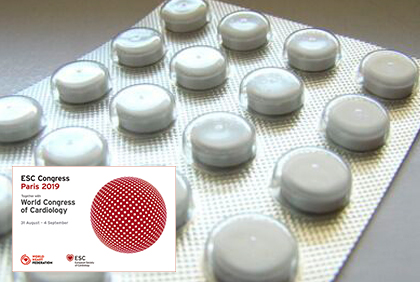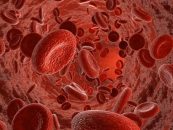In patients with atrial fibrillation and stable coronary artery disease who have not had revascularization procedures in the last 12 months, monotherapy with rivaroxaban seems the best treatment strategy compared to rivaroxaban plus antiplatelet antiaggregation. This is what resulted from the AFIRE study, presented during the ESC 2019 in Paris and published in NEJM. Monotherapy…
Permanent Carotid Coil Filters in Patients with Atrial Fibrillation
This new strategy to reduce the risk of stroke in patients with atrial fibrillation is technically feasible and safe, even though long-term outcomes are yet to be seen and despite the evidence available, for instance, left atrial appendage closure devices. It is true that they could be used simultaneously, but its synergy and cost have…
Do NOACs Result in Any Benefit in TAVR?
Courtesy of Dr. Carlos Fava. The need for anticoagulation after transcatheter aortic valve replacement (TAVR) is over 15% according to different reports and, so far, no one has analyzed in depth whether new oral anticoagulant agents (non-vitamin K oral anticoagulants [NOACs]) result in superior benefit compared with classic vitamin K antagonists (VKAs). This study analyzed…
PCI and Anticoagulation: What is the best strategy?
Most patients with atrial fibrillation require anticoagulation to reduce the risk of stroke or systemic embolization. Today, this is achieved with the new direct oral anticoagulants, which present lower intracranial bleeding risk compared against the old vitamin K antagonists. On the other hand, approximately between 5% to 10% of patients receiving PCI also present atrial…
Antithrombotic Strategies in Atrial Fibrillation and Angioplasty
What is the most appropriate antithrombotic strategy for a patient with atrial fibrillation and coronary artery disease, particularly when admitted with acute coronary syndrome or undergoing coronary angioplasty? This is a question whose answer is still in the works and that literature is addressing dynamically. Whatever we read yesterday may already be out of date…
ESC 2018 | FRANCE-TAVI: Atrial Fibrillation and Anticoagulation Associated to Mortality in TAVR
Some of the many ongoing randomized studies including patients with atrial fibrillation (AF) might finally answer the question on the best antithrombotic scheme post TAVR. According to this registry, in patients undergoing transcatheter aortic valve replacement, independent predictors of death at 3 years are being a man, having moderate to severe kidney failure, and having…
RE-DUAL PCI: Anti-Thrombotic Management in Patients with Atrial Fibrillation and PCI
RE-DUAL PCI outcomes have been published by the New England Journal of Medicine along with their presentation at ESC 2017. The traditional triple anti-thrombotic scheme with dual antiplatelet therapy and warfarin for patients with atrial fibrillation undergoing coronary angioplasty seems to have been left behind. This new study showed that the combination of dabigatran with a P2Y12…
Catheter-directed thrombolysis for pulmonary embolism: a safe technique
Courtesy of Dr. Brian Nazareth Donato. The conventional treatment for patients with pulmonary embolism (PE) has traditionally been anticoagulation plus systemic thrombolytics, or surgical embolectomy, reserved for high risk patients. Even though it has been shown systemic thrombolytics reduce mortality in PE patients at high or intermediate risk, its use has been limited given the…







